[press release]
United States Postal Service Unveils 10-Year Plan to Achieve Financial Sustainability and Service Excellence
Aims to meet or exceed 95 percent network-wide, on-time delivery
Operates at break-even by FY2023 avoiding $160 billion in projected losses over the next 10 years
Highlights Of The ‘Delivering For America’ Plan
- P
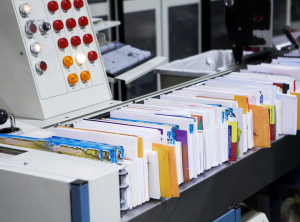 reserves affordable, six-day mail and expands seven-day package delivery
reserves affordable, six-day mail and expands seven-day package delivery - Generates $24 billion in net revenue in part from enhanced package delivery services for business customers, including same-day, one-day and two-day delivery offerings
- Improves cash flow to allow for investment of $40 billion in workforce, new vehicles, improved Post Offices, technology improvements, and infrastructure upgrades
- With congressional support accelerates move to an electric delivery vehicle fleet
- Adjusts select delivery standards to improve efficiency and reliability
- Enhances customer experience via new suite of consumer and small business tools
- Stabilizes workforce with a goal of cutting non-career employee turnover in half, and creating more opportunity for growth including more predictable progression into career workforce
- Aligns pricing to reflect market dynamics
- Asks for bipartisan legislation in Congress to repeal the retiree health benefit pre-funding mandate and to maximize future retiree participation in Medicare
WASHINGTON, DC – The United States Postal Service today released its 10-year Plan,‘Delivering for America,’ to return the organization to financial sustainability and achieve service excellence while maintaining universal six-day mail delivery and expanding seven-day package delivery.
 “The need for the U.S. Postal Service to transform to meet the needs of our customers is long overdue,” said Postmaster General and Chief Executive Officer Louis DeJoy [right]. “Our Plan calls for growth and investments, as well as targeted cost reductions and other strategies that will enable us to operate in a precise and efficient manner to meet future challenges, as we put the Postal Service on a path for financial sustainability and service excellence.”
“The need for the U.S. Postal Service to transform to meet the needs of our customers is long overdue,” said Postmaster General and Chief Executive Officer Louis DeJoy [right]. “Our Plan calls for growth and investments, as well as targeted cost reductions and other strategies that will enable us to operate in a precise and efficient manner to meet future challenges, as we put the Postal Service on a path for financial sustainability and service excellence.”
“The Board challenged Postal management to devise a Plan that was firmly rooted in our public service mission to bind the nation together,” said Ron Bloom, Chairman of the United States Postal Service Board of Governors. “The Plan will achieve service excellence, adapt the Postal Service to the evolving needs of the American people and address our obligat ion for financial sustainability. Through a wide-ranging process involving numerous talented and dedicated public servants throughout the organization and insightful input from many stakeholders, they have done just that. This Plan will revitalize this American treasure and we are excited to work with our union leaders, stakeholders and newly nominated Governors, once they are confirmed, as we move it forward.”
ion for financial sustainability. Through a wide-ranging process involving numerous talented and dedicated public servants throughout the organization and insightful input from many stakeholders, they have done just that. This Plan will revitalize this American treasure and we are excited to work with our union leaders, stakeholders and newly nominated Governors, once they are confirmed, as we move it forward.”
The comprehensive Plan includes a combination of investments in technology, training, Post Offices and a new vehicle fleet; modernizing the Postal Service’s processing network; adopting best-in-class logistics practices across delivery and transportation operations; creating new revenue-generating offerings in the rapidly expanding e-commerce marketplace and pricing changes as authorized by the Postal Regulatory Commission.
Successful implementation of the Plan requires partnership from legislative and regulatory 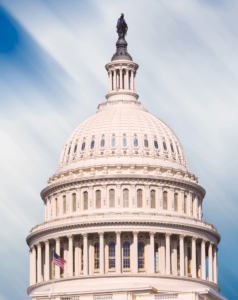 stakeholders as its composition includes:
stakeholders as its composition includes:
- Self-help initiatives to provide billions in new revenue and cost reductions, while improving the predictability and reliability of service
- Judicious implementation of new and existing pricing authorities
- Legislative changes to retiree health benefit funding rules including requiring Medicare integration and eliminating the pre-funding requirement
DeJoy continued, “The Postal Service’s problems are serious but, working together, they can be solved. Our 10-year Plan capitalizes on our natural strengths and addresses our serious weaknesses. It ensures that we can better meet the nation’s evolving delivery needs, and do so with the higher degree of efficiency, precision and reliability that our business and residential customers expect and deserve. It can and must be done.”
The Plan was developed through a rigorous and holistic process that included reviewing reports by the Office of the Inspector General (OIG) and the Government Accountability Office (GAO), and consulting with numerous stakeholder groups.
Investing in People, Technology and Infrastructure
The Postal Service Plan will spur cash flow and savings to make $40 billion in capital investments over the next 10 years, many of which have been long-delayed due to the organization’s financial challenges of the past decade. This includes a recent multi-billion dollar contract to modernize the Postal Service’s delivery vehicle fleet, which is over 28-years old on average and unsuitable for accommodating growing package volume. The first of the new vehicles are expected to appear on carrier routes beginning in 2023. With Congressional support, our delivery fleet can be electric by 2035, substantially reducing our carbon footprint.
“Investing in the Postal Service’s future means investing in our people,” said DeJoy. “For too many years, Postal employees have been asked to do more with less – forced to employ antiquated systems, utilize outmoded equipment, and drive outdated vehicles. This drives up costs and slows down service for customers. We cannot afford to keep this up. We believe firmly in putting the 644,000 women and men of the Postal Service in the best possible position to succeed in their mission of service, while also enabling a more predictable progression from non-career employees into the career workforce. Our goal is to significantly reduce non-career annual turnover rates.”
Other planned investments include advanced package processing equipment; Post Office and facility upgrades; deployment of new mobile devices for carriers; new employee uniforms; best-in-class information technologies across the enterprise; and enhanced training and development to empower the workforce.
Enhanced Customer Experience and New Revenue Generating Offerings to Meet Business and Consumers’ Expanding E-Commerce Needs
The Postal Service has one of the best last mile delivery networks in the world, which enables the delivery of goods and services to more than 160 million addresses across the country. The Plan identifies several strategies to leverage this unparalleled end-to-end 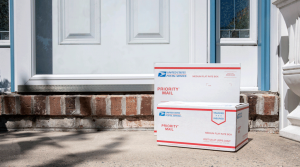 delivery network to generate $24 billion in new package net revenue growth and meet business and consumers’ rapidly evolving e-commerce needs.
delivery network to generate $24 billion in new package net revenue growth and meet business and consumers’ rapidly evolving e-commerce needs.
This includes a new suite of services called USPS Connect, connecting businesses, large and small, to urban and rural communities across the nation. The Postal Service will expand its core package products, namely Priority Mail, Priority Mail Express, First-Class Package Service and Parcel Select to offer same day, next day and 2-3 day delivery options six to seven days a week.
Other offerings will include an enhanced Informed Delivery platform, enabling business and residential users to do more, such as provide carriers instructions on where to leave or pick-up packages, notify USPS to hold mail or schedule redelivery of packages before important items reach their mailboxes. Through these and other actions, the Plan also strengthens the mail channel for the nation’s commercial and personal needs.
Adjust Select Delivery Standards to Dramatically Improve Service Reliability
To drive greater network efficiency, the Postal Service will submit filings with the Postal 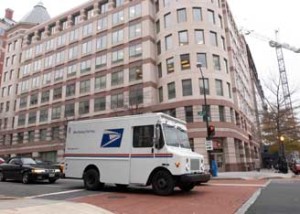 Regulatory Commission to modify the service standards for First-Class Mail Letters and Flats, as well as First-Class Package Service. These modifications will shift volume from unreliable air transportation to more reliable ground transportation, and enable network improvements that will allow us to meet or exceed 95 percent on-time delivery across mail and shipping product classes. First-Class Mail traveling within a local area will continue to be delivered in one or two days and 70 percent of First-Class Mail will continue to be delivered within three days or less.
Regulatory Commission to modify the service standards for First-Class Mail Letters and Flats, as well as First-Class Package Service. These modifications will shift volume from unreliable air transportation to more reliable ground transportation, and enable network improvements that will allow us to meet or exceed 95 percent on-time delivery across mail and shipping product classes. First-Class Mail traveling within a local area will continue to be delivered in one or two days and 70 percent of First-Class Mail will continue to be delivered within three days or less.
The Postal Service also anticipates using its processing facilities differently to reflect the dramatic increase in package volume and declines in mail volumes, and accommodate new revenue generating e-commerce offerings to better meet the needs of our customers. The plan anticipates an evaluation of facility operations, using the applicable regulatory processes.
Legislative Initiatives and Administrative Elements to Better Compete and Achieve Financial Sustainability
The most significant item the Postal Service is asking the 117th Congress to pass is legislation to require that retiree health benefits be integrated with Medicare, and that the 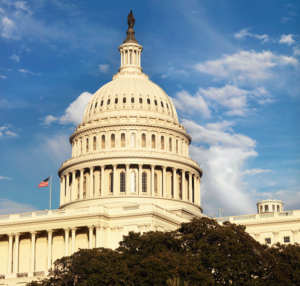 expense associated with these benefits be based on vested benefits, which would reduce the Postal Service’s cash flow expenses by approximately $44 billion over 10 years. Legislation is also being supported to address burdensome retiree health benefit prefunding. We also propose that the Administration require the Office of Personnel Management to use a simple and fair method in how it apportions Civil Service Retirement System (CSRS) liabilities for employees who transitioned to the Postal Service from the Post Office Department. These requested changes will benefit current retirees, current employees and the Postal Service.
expense associated with these benefits be based on vested benefits, which would reduce the Postal Service’s cash flow expenses by approximately $44 billion over 10 years. Legislation is also being supported to address burdensome retiree health benefit prefunding. We also propose that the Administration require the Office of Personnel Management to use a simple and fair method in how it apportions Civil Service Retirement System (CSRS) liabilities for employees who transitioned to the Postal Service from the Post Office Department. These requested changes will benefit current retirees, current employees and the Postal Service.
In addition, in the coming weeks, the Postal Service will submit a number of filings with the Postal Regulatory Commission regarding pricing, products and services, and infrastructure.
To learn more and view the full Plan, visit www.usps.com/deliveringforamerica. You can also view the Plan-at-a-Glance at https://about.usps.com/newsroom/national-releases/2021/usps-delivering-for-america-plan-at-a-glance.pdf.
The Postal Service receives no tax dollars for operating expenses and relies on the sale of postage, products and services to fund its operations.



